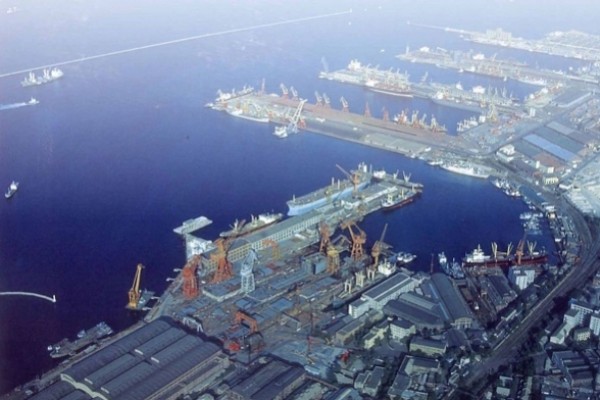| Chinese Port consolidation accelerates | |

| Author: CSEBA / Beltandroadnews |
| 7th August 2019 |
| BEIJING - Beijing has started another round of port asset consolidation as the government draws up its port connection blueprint for the One Belt, One Road initiative. |
|
The move is part of the government’s ongoing efforts to consolidate the entire maritime industry with aims to shed overcapacity and improve efficiency. The same is happening for shipowners and shipbuilders. China has 34 major ports and more than 2,000 minor ports. Currently six out of the world’s 10 largest container ports (excluding Hong Kong) are located along China’s coastline, stretching from Qingdao in the north to Shenzhen and Guangzhou in the south. Over the past few years, the Chinese port sector has been facing severe overcapacity issues thanks to large amounts of uncoordinated and repeated investments and the sluggish shipping market. According to data by Shenwan Hongyuan Securities, China’s government has spent an estimated RMB1trn ($144bn) on port infrastructure development since 2012. So far, 18 provincial level regions with sea or river ports have been ordered by central government to ramp up mergers, and four coastal provinces including Liaoning, Zhejiang, Jiangsu and Guangxi have already completed their port integration. Many more provinces are expected to follow this step soon. “The overcapacity issue, combined with intensified competition among Chinese ports, is threatening the sustainability of China’s port sector,” says Zhao Nan, a senior researcher at Shanghai International Shipping Institute (SISI). “The integration of port assets at provincial level would help better allocate resources and eliminate cutthroat competitions,” Zhao adds. In the Bohai Rim region, China Merchants Group officially took control of Liaoning Port Group last month. The latter just completed the integration of Dalian Port, Jinzhou Port and Yingkou Port this year. On July 10, Qingdao Port International announced that the State-owned Assets Supervision and Administration Commission (SASAC) has arranged a merger under which Weihai Port Group will transfer ownership of Weihai Port to Qingdao Port. Upon completion of the deal, Weihai Port will become a subsidiary of Qingdao Port. The merger is likely to be a part of the port assets integration in Shandong. Splash understands that Shandong province will establish a port group later this year to integrate four major Ports, Qingdao Port, Rizhao Port, Yantai Port and Bohai Bay Port. Earlier in July, COSCO Shipping Ports entered into a merger agreement with Tianjin Port Holdings and China Merchants International Terminals to merge their Tianjin container terminal assets, Tianjin Port Container Terminal Company (TCT), Tianjin Five Continents International Container Terminal Company (FICT) and Tianjin Orient Container Terminal Company (TOCT). COSCO believes that the merger will optimise the allocation of resources in the region, and enhance the unified management of the relevant terminals and lower operational costs. Taicang Port, the largest container port along the Yangtze River, is also consolidating the river port assets in Jiangsu. It formed a strategic partnership with nearby Jintan Port in Changzhou to jointly promote the river ocean container shipping business, which will see Taicang Port shifting part of its functions to Jintan Port. Han Ning, Director of Drewry China, has seen port regionalisation become a trend and she reckons the consolidation will create more benign competition at provincial level and increase profitability for the port operators as capacity additions would be better managed, opex could be shared and lowered while potentially fees could be hiked. “The liners have been consolidating, port operators can too. Port consolidation can improve port’s voice a little bit. But if you look at container ports, each province has only one key container port (except for Shenzhen). This means even after provincial-level consolidation, a key port can attract slightly more feeder/short sea cargo, but not that much. All will still depend on the hinterland economy,” Han reckons. For liners operating on China coastal market, the Drewry consultant believes consolidation could mean slightly less port choices. “Theoretically a port operator can increase tariff a bit. Considering most ports are under SOE control, the government is less likely to allow port operators to increase tariffs, especially when traffic growth rate is very low,” Han says. While consolidating the domestic ports, China is making efforts to further expand its presence in the overseas port sector. Last month, China’s state-run construction giant China Communications Construction Company (CCCC) entered into an agreement with port equipment manufacturer Shanghai Zhenhua Heavy Industries (ZPMC) to collaborate on port operations. Under the agreement, three subsidiaries of CCCC will form a joint venture with ZPMC and the new company will focus on investment and operations of overseas ports. The set up of the JV marks both the two conglomerates’ entry into the port operation sector. At the end of June, China’s Rizhao Port Group was selected by Aluminum Corporation of China (Chalco) as the operator of the Boffa Port project in Guinea. The Boffa Port, which is being developed as part of the Boffa bauxite project, has a designed capacity of handling 12m tons of bauxite each year. The port will commence operations in December this year. Mighty COSCO is now the world’s third largest container terminal operator with a global throughput last year of 46.1m teu, according to Drewry with China Merchants climbing the ranks fast too, handling 35m teu last year. |
 |
|
| 23rd November 2024 | |
| China has good news for Croatian citizens | |
 |
|
| 7th November 2024 | |
| Pelagos net farm products presented at the Shanghai fai | |